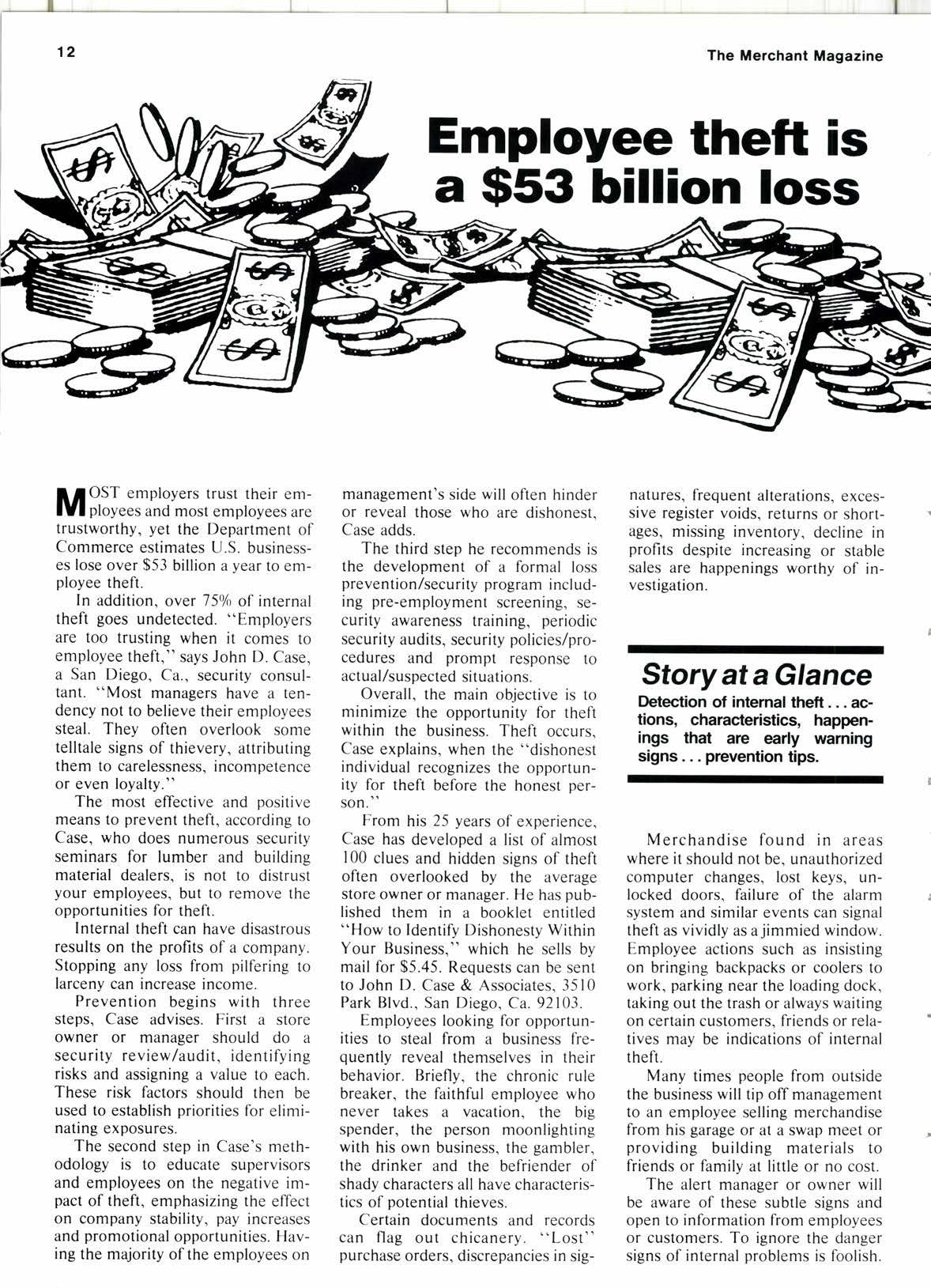
1 minute read
Employee theft is a $53 billion loss €d b>t
management's side will often hinder or reveal those who are dishonest. Case adds.
The third step he recommends is the development of a formal loss prevention/security program including pre-employment screening. security awareness training, periodic security audits, security policies/procedures and prompt response to actual/suspected situations.
Overall, the main objective is to minimize the opportunity for theft within the business. Theft occurs. Case explains, when the "dishonest individual recognizes the opportunity for theft before the honest person."
From his 25 years of experience, Case has developed a list of almost 100 clues and hidden signs of theft often overlooked by the average store owner or manager. He has published them in a booklet entitled "How to ldentify Dishonesty Within Your Business," which he sells by mail for $5.45. Requests can be sent to John D. Case & Associates, 3510 Park Blvd., San Diego, Ca. 92103.
Employees looking for opportunities to steal from a business frequently reveal themselves in their behavior. Briefly, the chronic rule breaker, the faithful employee who never takes a vacation, the big spender, the person moonlighting with his own business, the gambler, the drinker and the befriender of shady characters all have characteristics of potential thieves.
Certain documents and records can flag out chicanery. "Lost" purchase orders. discrepancies in sig- natures, frequent alterations, excessive register voids, returns or shortages, missing inventory, decline in profits despite increasing or stable sales are happenings worthy of investigation.
Story at a Glance
Detection of intemal theft. actions, characteristics, happenings that are early warning signs. prevention tips.
Merchandise found in areas where it should not be, unauthorized computer changes, lost keys, unlocked doors. failure of the alarm system and similar events can signal theft as vividly as a jimmied window. Employee actions such as insisting on bringing backpacks or coolers to work, parking near the loading dock, taking out the trash or always waiting on certain customers, friends or relatives may be indications of internal theft.
Many times people from outside the business will tip off management to an employee selling merchandise from his garage or at a swap meet or providing building materials to friends or family at little or no cost.
The alert manager or owner will be aware of these subtle signs and open to information from employees or customers. To ignore the danger signs of internal problems is foolish.

![THE PRO]IISARE IU$AS BEAUTIFU].](https://assets.isu.pub/document-structure/230727143700-d81ce9ec75d4d0b8100c1b42c2cda9ca/v1/e3f1d4a6659b4ebc9878f79ef8b2196f.jpeg)








